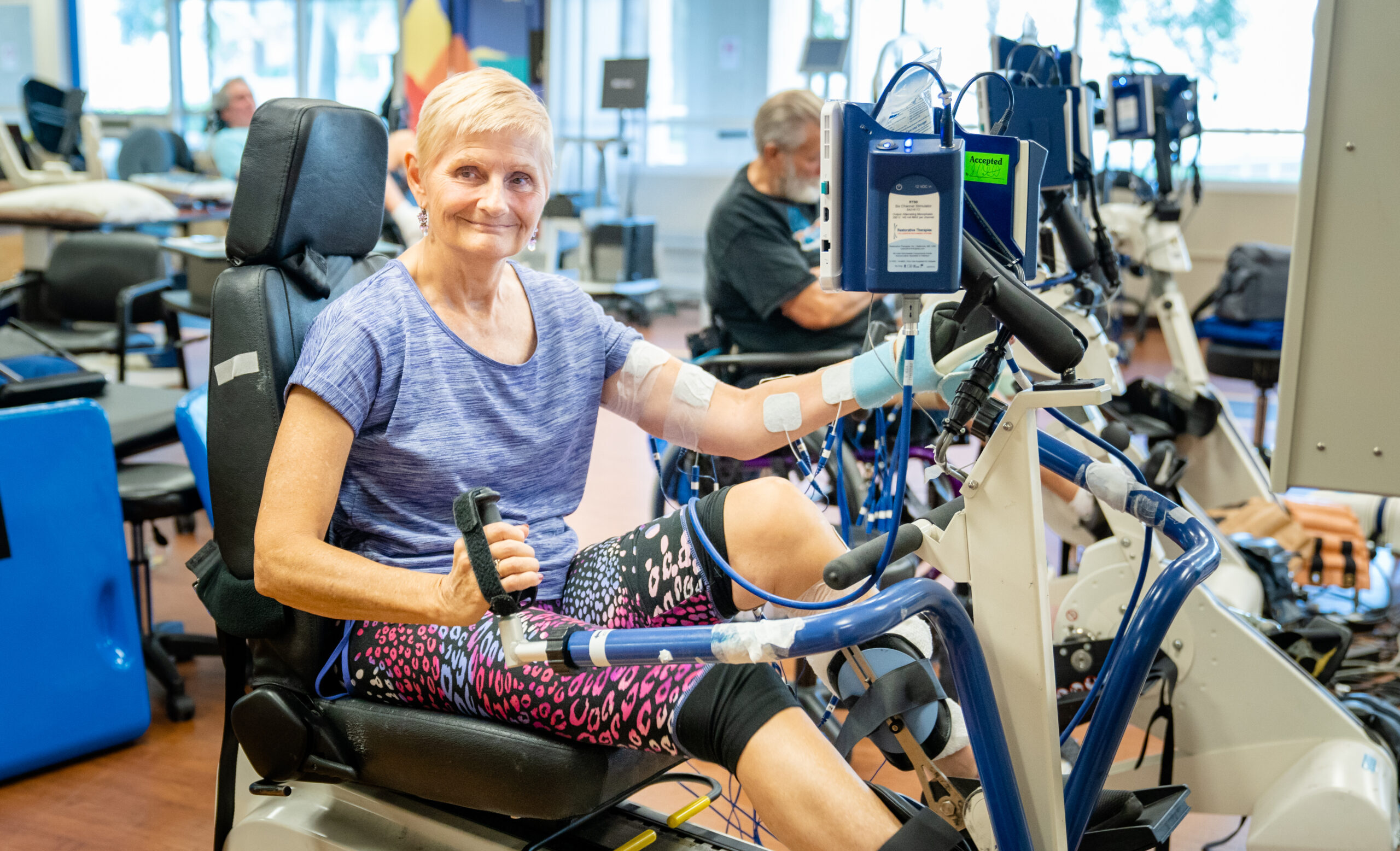What does Stroke Rehabilitation look like in an Outpatient care setting?

Back to physical health resource hub
Stroke is one of the leading causes of death in the United States and is the leading cause of serious long-term disability. According to the Centers for Disease Control, a stroke occurs about every 40 seconds meaning more than 795,000 Americans are impacted each year. Having a stroke is a major life event and can take a physical, emotional and psychological toll for not only the patient, but also their family. After suffering a stroke many patients spend a short time in the hospital to receive medical and rehabilitation services. Depending on the severity of the stroke, a patient may discharge to a skilled nursing facility, inpatient rehabilitation facility or home with outpatient therapy once stable.
Rehabilitation services, like physical, occupational or speech therapy can help improve function, self-confidence and overall quality of life. In outpatient physical therapy, the first goal of therapy is to determine the patient’s needs. This is done by going through an initial evaluation where the physical therapist (PT) will test muscle strength, sensation, coordination, balance and different functional movements (sit to stand, rolling in bed, moving from lying down to sitting up on the edge of the bed). From there, the PT will work with the patient to establish goals and come up with a plan of care. Once the plan is created, the PT will guide the patient through various exercises (balance exercises, gait training, sit to stand training, bed mobility, etc.) to help restore movement which will allow the patient to achieve their goals.
Every patient’s needs and goals will differ, so the therapy plan will look different for each patient. For example, a common goal after stroke is to walk better. In order to achieve this goal, the physical therapist may begin with teaching the patient to shift their weight left and right in order to prepare the legs for accepting all of the patient’s body weight. Once this exercise is mastered, the PT may then have the patient practice taking forward steps one at a time. From there the therapy may progress to walking in the parallel bars or with a walker. Eventually with practice, repetition and hard work the patient may work on walking with a cane or no assistive device at all.
This same step by step approach is taken with all of the patient’s goals, whether the goal is to walk better, get in and out the bed better, go up or down the stairs more safely or improve balance to help prevent falls. If you or your loved one has suffered a stroke and are wondering whether physical therapy would be beneficial, talk to your neurologist or primary care physician to see how physical therapy can be added into your post-stroke treatment plan.


